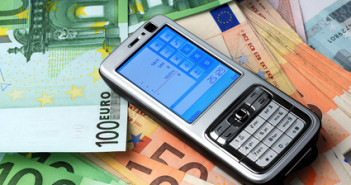The pound got an early lift this week, after the Bank of England’s Charlie Bean commented in an interview with the Sunday Times that “I would welcome us getting on to the path of normalisation, as a demonstration that the economy is healing. Frankly, having interest rates at an emergency level for a very long time is not a situation one wants to be in.â€
Coming so shortly after Mark Carney’s hawkish comments a few days earlier, the upward momentum in the sterling was compounded. GBP/USD briefly spiked above 1.70 but it didn’t last, as UK inflation data, released on Tuesday morning, printed a lot weaker than expected at 1.5% y/y vs. 1.7% – the slowest annualised rate for four and a half years, according to the Office of National Statistics, and well below the Bank of England’s 2% target. In result, GBP/USD gapped from 1.6976 to 1.6946, and at the time it went some way to abating the aggressive calls for a rate hike from the Bank of England for the end of this calendar year.
By Alex Edwards at UKForex, an international money transfer service
Given the hawkish rhetoric coming from Bank of England officials, we thought we might see at least one vote for a rate hike in the MPC minutes that were released on Wednesday – we didn’t. Pound-bulls hoping for a split vote from the MPC minutes were left disappointed, as it showed another 9-0 vote against raising borrowing costs, and cable dropped from 1.6970 to 1.6935, where it found strong support.
Later that same day, the U.S. FOMC statement, economic projections and press conference fell due. As expected, QE was tapered by another $10bn, taking it down to $35bn. The economic projections showed that 2014 GDP estimate had been lowered to 2.1-2.3% from the March estimate of 2.8-3%, largely due to the poor winter weather. Hopes for an early interest rate rise were dashed, too, as Fed Chair Janet Yellen used the press conference to play down such expectations, saying the Fed would keep rates at their current level for a “considerable time.â€Â She steered clear of giving a definition of the exact time-period meant by her phrase. The USD weakened and cable pushed back through the 1.70 figure, then going on to reach multi-year highs again up and over 1.7050.
As for the euro, it staged somewhat of a recovery this week. European CPI was released on Monday and printed in line with market expectations at 0.5% y/y. It was quite a relief to investors, with the fact that it didn’t come in under forecasts actually helping to support bids in the single currency. In other positive news, the Bundesbank said earlier in the week that they expected German growth to be stronger in Q3 2014 than Q2. German ZEW put a small dent in the recovery when the index printed at 29.8 vs. the expected 35. EUR/USD drifted lower towards the end of the week as German PPI (another inflation measure) came in at -0.2% m/m against expectations of 0.2%. On the back of the release, GBP/EUR moved from 1.25 to 1.2530 on Friday morning.
The next figures to look out for are Monday’s array of Eurozone PMI data, as the German and French governments hope last month’s poor manufacturing figures were a blip. From the U.S., we have Existing Home Sales and Durable Goods Orders. The main event this side of the pond will be the release of the Bank of England’s Financial Stability Report and an accompanying statement from Governor Mark Carney on Thursday.
More:Â Keeping Calm and Carrying On: Fed Holds Course



